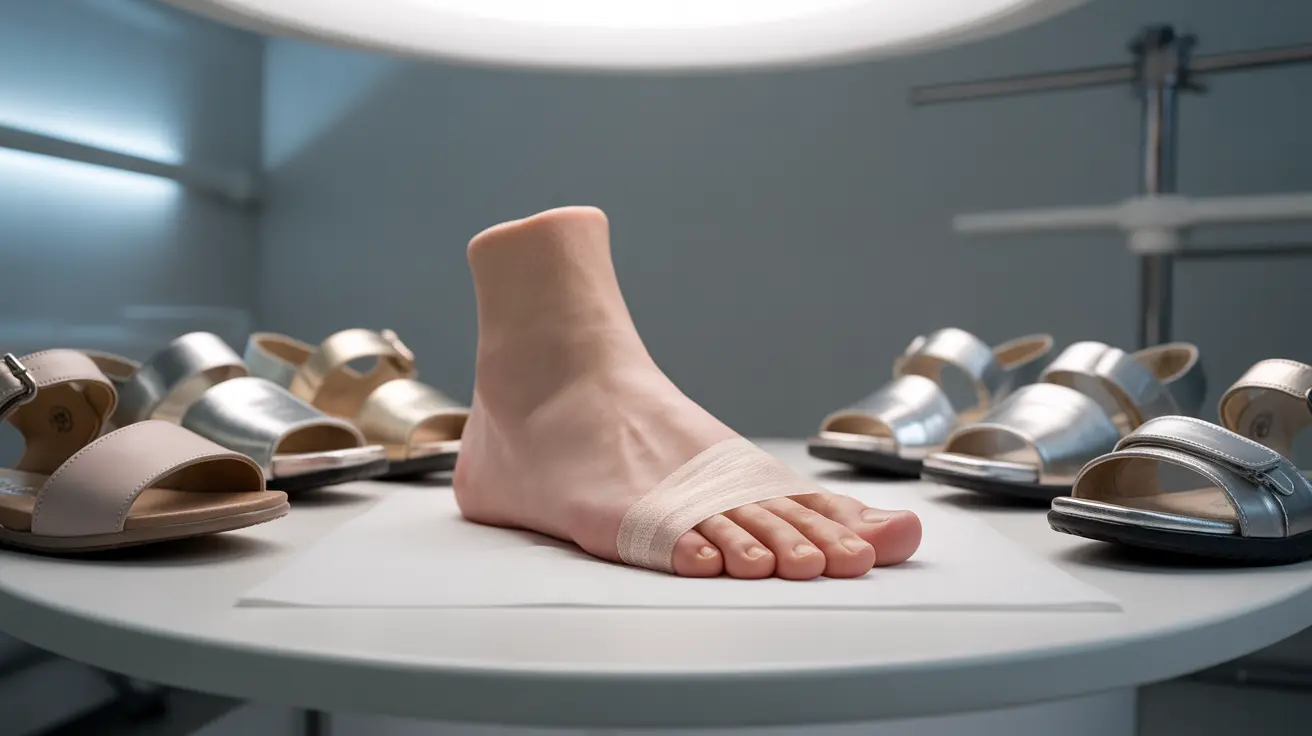Undergoing ingrown toenail surgery is an important step toward relieving pain and preventing complications. Understanding what to expect during recovery and how to properly care for your toe can significantly impact your healing process and help prevent future issues.
This comprehensive guide will walk you through the essential aspects of post-surgical care, including healing timelines, proper wound care, and steps to prevent recurrence.
Understanding the Healing Timeline
The recovery process after ingrown toenail surgery typically progresses through several stages. Most patients can expect initial healing to take about two weeks, though complete recovery may take longer depending on the procedure's extent.
During the first few days, you'll need to keep weight off the affected toe and maintain strict wound care protocols. Many patients can return to light activities within 24-48 hours, but full recovery requires patience and proper care.
Proper Post-Surgery Wound Care
Maintaining proper wound care is crucial for preventing infection and ensuring optimal healing after your procedure. Follow these essential care steps:
- Keep the surgical site clean and dry
- Change bandages as directed by your healthcare provider
- Apply any prescribed antibiotic ointments as instructed
- Monitor for signs of infection
- Avoid touching or disturbing the wound unnecessarily
Footwear and Activity Modifications
Choosing appropriate footwear is crucial during your recovery period. Initially, you may need to wear open-toed shoes or surgical shoes to accommodate bandaging and prevent pressure on the healing toe.
Recommended Footwear Options
Consider these footwear guidelines during your recovery:
- Wide-toed shoes that don't compress the affected area
- Sandals or surgical shoes for the first few days
- Gradually transition to regular shoes as healing progresses
- Avoid tight or narrow shoes that could irritate the surgical site
Managing Post-Surgical Symptoms
Some discomfort and symptoms are normal after ingrown toenail surgery. Understanding what to expect can help you distinguish between normal healing and potential complications.
Normal Recovery Signs
- Mild pain and tenderness
- Slight redness around the surgical site
- Minor drainage for the first few days
- Mild swelling
Warning Signs to Watch For
- Severe or increasing pain
- Excessive swelling or redness
- Pus or foul-smelling drainage
- Fever or chills
Preventing Future Ingrown Toenails
Taking preventive measures after surgery can help reduce the risk of recurrence. Proper nail trimming techniques and appropriate footwear choices play crucial roles in prevention.
Frequently Asked Questions
How long does it take to heal after ingrown toenail surgery and when can I return to normal activities?
Most people can return to light activities within 24-48 hours after surgery. Complete healing typically takes about two weeks. However, you should avoid strenuous activities and sports for at least two weeks or as advised by your healthcare provider.
What are the best ways to care for my foot and prevent infection after ingrown toenail surgery?
Keep the surgical site clean and dry, change bandages as directed, apply prescribed antibiotics if given, and follow your doctor's specific wound care instructions. Avoid getting the area wet for the first 24 hours and monitor for signs of infection.
What kind of shoes should I wear, and for how long, after ingrown toenail surgery?
Initially, wear open-toed shoes or surgical shoes to accommodate bandaging. As healing progresses, transition to wide-toed shoes that don't put pressure on the affected area. Avoid tight or narrow shoes for at least 2-3 weeks after surgery.
Is it normal to have pain, swelling, or drainage after ingrown toenail surgery, and when should I call my doctor?
Mild pain, swelling, and slight drainage are normal in the first few days after surgery. Contact your doctor if you experience severe pain, excessive swelling, pus-like drainage, fever, or if symptoms worsen over time.
Can the ingrown toenail come back after surgery, and what can I do to reduce the risk of recurrence?
While permanent nail removal procedures have a low recurrence rate, partial removals may have a higher chance of recurrence. To prevent future issues, trim toenails straight across, wear properly fitting shoes, and maintain good foot hygiene.
Remember to always follow your healthcare provider's specific instructions, as they may vary based on your individual case and the type of procedure performed.




